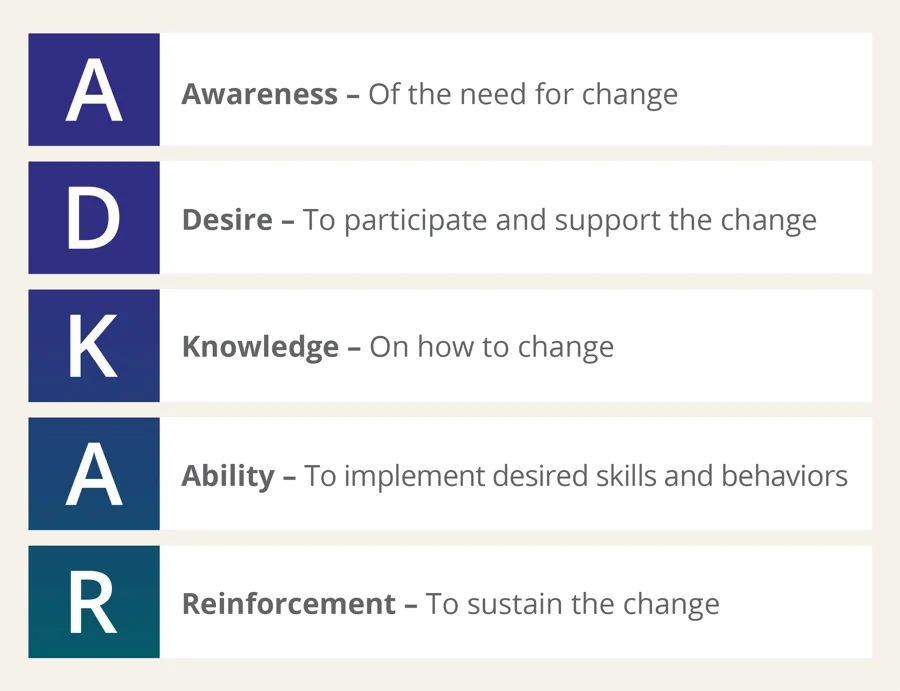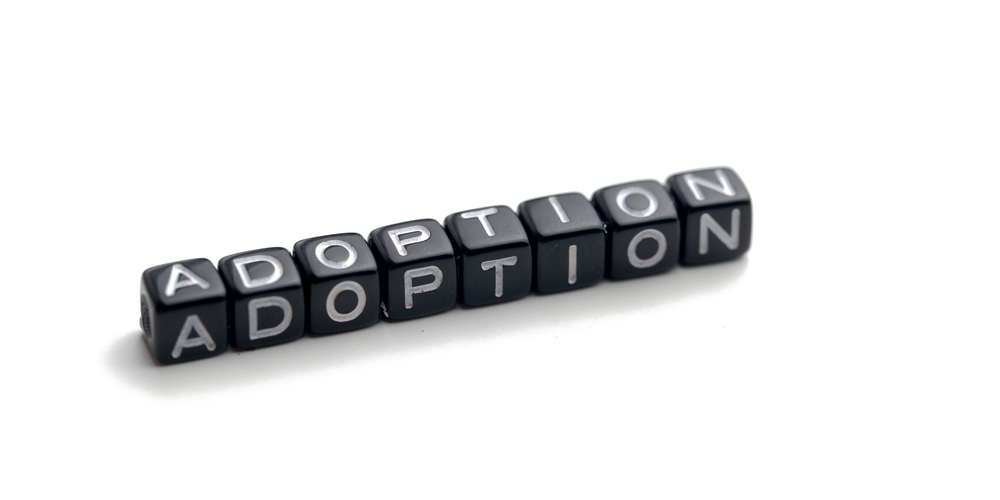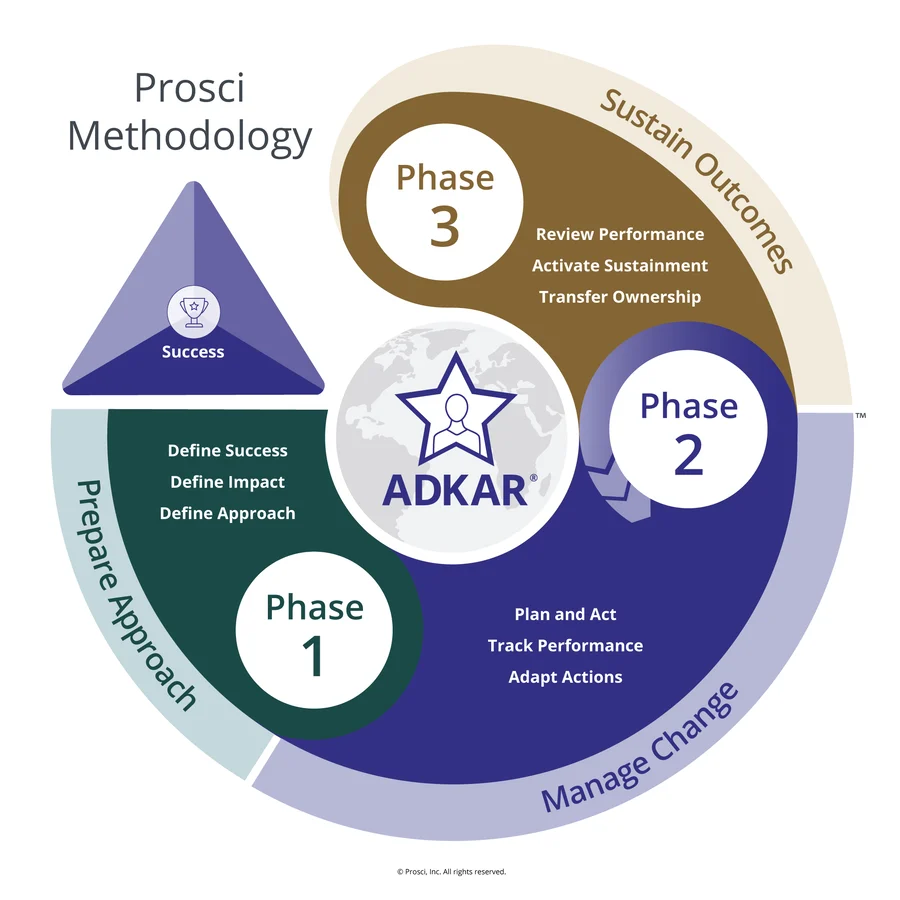ADKAR is a Change Management Model, Not a Methodology
Organizations and change practitioners around the world use the Prosci ADKAR Model because of its simplicity and effectiveness for preparing, equipping and supporting people to successfully transition through changes. As a result of ADKAR’s popularity, many users of the model assume that it is Prosci’s change management methodology. That assumption is incorrect. ADKAR is a model for individual change, not a complete change management methodology. Here are the key differences.

What Is the Difference Between a Model and a Methodology?
Generally, a model gives you a simplified view or a snapshot of a complex process or system.
A methodology offers a complete process, procedures, approaches, rules and guard rails, and best practices to guide decision making and problem solving at the individual or group level.
For example, if you are building a house, the blueprint is your model. It provides a clear representation of what the final house should look like, along with essential details, such as the number of rooms, their layout, and the dimensions.
The step-by-step guide that tells you how to construct the house (or an entire neighborhood) is the methodology. It outlines specific rules and actions, such as which permits you need, laying the foundation, putting up walls, installing plumbing and electrical systems, and so on.
What is the ADKAR Change Management Model?
The Prosci ADKAR Model for individual change provides a framework for understanding the different elements involved in a change initiative and how they relate to one another. The ADKAR Model is a powerful tool designed to help an individual person navigate through changes of all kinds, whether personal or professional.
ADKAR is an acronym for the model’s five elements: Awareness, Desire, Knowledge, Ability and Reinforcement. These elements represent the sequential transition every person goes through to successfully adopt and use a change:

By focusing on these five elements, the ADKAR Model provides a clear roadmap for an individual to follow as they work to adopt new behaviors or ways of thinking.
Although ADKAR is a change management model for individual change, it is valuable to organizations because organizational change requires individual change. Ultimately, the organizational outcomes from a change are the collective result of individuals adopting and using the change.

One of the key benefits of the ADKAR Model is its simplicity. The ADKAR Model is easy to understand and apply to a wide range of personal and professional changes. By breaking down individual transitions into five discrete elements or building blocks, the ADKAR Model makes it easier for people to stay motivated and focused as they work towards adopting and using a change.
It’s important to note, however, that the ADKAR Model is not a change management methodology. While ADKAR is a valuable tool for helping individuals navigate changes, it does not provide a comprehensive approach, process and set of tools for managing change at an organizational level. For this reason, it is critical to understand where and how the ADKAR Model fits within Prosci’s change management methodology.
What Is the Prosci Methodology for Change Management?
The Prosci Methodology is a structured, adaptable and repeatable approach to enable the people side of change and deliver organizational results. It includes a set of models, processes, tools and techniques designed to help organizations navigate the complexities of change and achieve their desired outcomes.

The Prosci Methodology puts people at the center of successful change and comprises three key components:
- Prosci Change Triangle (PCT) Model – A framework depicting the four critical aspects of any successful organizational change: success, leadership/sponsorship, project management and change management
- Prosci 3-Phase Process – The critical link between individual change and organizational change management
- Prosci ADKAR Model – A change management model for individual change
The Prosci Methodology provides the strategies and steps for planning, implementing, evaluating and sustaining a change initiative, including detailed guidance on how to manage the people, processes and technologies involved. You can also use the Prosci Methodology to build change management capabilities at the enterprise level.
The Prosci ADKAR Model and Prosci Methodology
Although the ADKAR Model is not a methodology, it is a critical component of the Prosci Methodology. Applying ADKAR, even when working on a complex, organization-wide change, ensures that there is always a focus on what is required to prepare, equip and support each impacted person to adopt and use the change.